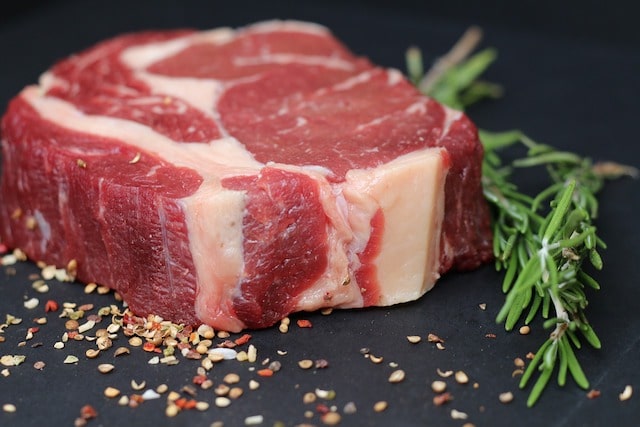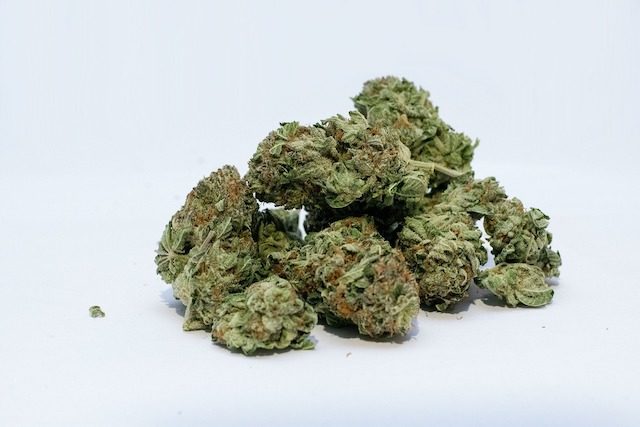One thing you can always count on is that the moment you deny something to people, or charge them prices they can’t afford, an entrepreneur is born. Getting people things cheaply, even when it’s not legal, happens all over the world. And during wartime, when resources become scarce, black markets can spring up to meet any conceivable need.
10. Meat

The rationing of meat during the Second World War was one of the biggest opportunities for black marketeers to latch on to. American consumers were accustomed to beef, pork, and to a lesser degree lamb and veal. But these meats were also needed by the military for the troops. Farmers could get more money selling the meat to the government than they could at the market, so more went to the war effort and less stayed at home.
The government tried to make it not a big deal, even going out of their way to publish recipes for people to extend their meat rations. It didn’t really work. The black market met the demands of those willing to risk it.
Those who were willing to work illegally saw the opportunity to make even more money. A good cut of steak was impossible to legally find, but on the black market it could fetch more money than even selling it to the government. And for the end consumer, they’d get meat that they otherwise could not legally find anywhere, plus they didn’t need to use ration points which could still be exchanged for less desirable cuts. It was a win-win, if you ignored the legality.
They actually called the black market meat sellers “meat leggers” and likened them to gangsters. Propaganda films were made to scare the public in which anyone who ate black market meat got sick. The efforts were not very successful. People liked their meat.
An investigative journalist did an article on the subject and managed to round up a literal ton of black market meat to show just how easy it was to find. Finally, in 1946, the President removed meat from the ration list entirely fearing that restricting it any longer would lead to civil unrest.
9. Gasoline

Of all the substances rationed for war time, gasoline was one of the most important. In 1943, the US was running about 500,000 barrels a day short of what it needed thanks to military use. Rationing had to account for that discrepancy. There were 1.8 million barrels being filled every day, and the military needed 600,000 of them. The fact that some tankers of gasoline had sank in the ocean on the way to keep up supplies the previous year also made the situation drastic. The black market was ripe.
Seventeen states started rationing gas in May 1942. That was up to 48 states by the year’s end. Drivers were issued stamps that spelled out their gas allotment. The speed limit was reduced to allow gas conservation and carpooling was encouraged. But the black market rose up to meet demands as well.
Chiselers became commonplace during the days of gas rationing. Chiseled gas was gas that someone managed to buy, at regular market price, when doing so was technically not legal. Basically, a chiseler would show up at a gas station and smooth talk the owner. They were supposed to be rationing the gas, but if you were offering cash and no one was looking, a deal could be made. Not every gas station did it, but many did. A writer from Colliers magazine drove from the Mexican border to the Canadian border in 1943, filling up on nothing but chiseled gas.
8. Sugar

While it seems obvious how meat and gasoline were needed for the war effort, the rationing of sugar is less easy to understand devoid of context. Did the military really need that much sugar? It was certainly necessary for food energy to supply the troops with something that contained sugar, but that was not the reason for sugar rationing in the war.
Japan had attacked the Philippines, and that means the major source of sugar for the US was cut off. The US does not grow sugarcane as a staple crop and sugar was not produced in the country in great abundance.
Sugar shipments from places like Hawaii or Central America were also slowed down. The vessels used to transport sugar were needed for the war effort. Cargo ships were diverted to other uses and shipments decreased by as much as half. Sugar was still making it to America, but far less of it.
Sugar was the first product to be rationed during the war in the US and Canada as well. It was the last one to come off the list when it ended. At one point rations were down to 15 pounds per year. Adults were using one cup per week at a time when baking and canning were common and encouraged.
Black market sellers faced stiff penalties and those who trafficked in sugar could lose the license to make anything with it if they were caught.
7. Cigarettes

Cigarettes have always been one of those products that has a huge market despite not being necessary in any way. Today we understand the health effects but back in World War 2, people just knew they loved taking a trip to flavor country.
Rations for soldiers included cigarettes and the tobacco industry was all too happy to provide them. American GIs got free cigarettes for their own needs. Soldiers were actually encouraged to smoke and they went through 290 billion of them. They could also buy packs for 50 cents and then sell them on the black market in Berlin for $100.
Closer to home, a black market for cigarettes was established in Canada thanks to Americans coming across the border. They were easier to get in the US but not so much in Canada so when a pair of enterprising Edmontoners were caught with a stash of 4,200 American smokes, the RCMP were quick to fine them and arrest the Americans involved as well.
6. Tires

Rubber was one material the government needed for the war effort and the demand for it was high. Unlike many food products which were rationed, rubber sales were essentially halted altogether. That meant tires were no longer being produced. Those who needed new tires found themselves in a precarious position. If you had a spare, then great. If you didn’t, then you weren’t going to find a new one.
Gas rationing and the new 35 miles-per-hour speed limits were meant to help gasoline supplies last, but they were also meant to conserve rubber at home. The rubber was needed for military vehicles and other supplies abroad. That means a black market was able to be set up in the early days of the war back home for those in need. Remember, this was in the days before synthetic rubber was easily produced. America needed access to rubber trees; they couldn’t be grown in America and supplies from overseas were ended.
So great was the demand for rubber that people would go to work for the day and come back to their car to find the tires missing. Black market tires were available for upwards of $50 a piece. That may not seem crazy in present day prices, but it was five times the regulated price for a brand new tire during the war.
5. Watches

In the closing days of World War II as the Allied Forces came together in Berlin, black markets sprang up that allowed American, British and Soviet forces to mingle and buy items that they had been denied in the previous years during the war. And Americans soon learned that the thing Soviet troops craved more than anything else was watches.
In Soviet Russia, a nice watch was not exactly a common item. Watches meant affluence and importance. But more than that, they meant money. Literal money. Russian currency was not stable, but a watch always had value. A soldier could send a watch home to his wife and a single wristwatch could be traded for an entire cow.
Technically Americans were not allowed to participate in black market dealings, but the fact that some Russian troops were sporting up to a dozen watches on their arms indicates that it was probably more common than you might think.
4. Housing

Of all the things you’d think would be available on the black market, housing seems the least likely. In fairness, no one was smuggling houses and selling them behind closed doors, but there were shady dealings when it came to rental expenses in certain areas.
Numerous American workers had gone north to Canada during the war and that created a housing problem in cities like Edmonton where rural workers were also coming into the city looking for jobs. Rent was capped at $25 per month and landlords were required to register their properties. However, those who saw the housing shortage as an opportunity to make money quickly skirted the rules. Some people ended up paying $10 a month to stay in a garage; others would pay as much as $40 or $50 per month. This eventually rose to $100 or more and house sales reached 300% of regulated rates.
3. Ration Stamps

For some black marketeers, the best and easiest way to work around the system was not to work with individual commodities but to play the whole system. Ration books full of stamps were used by citizens in most Allied countries. You had to exchange stamps in exchange for specific goods and if you didn’t have the stamp you couldn’t buy the product whether it be meat, coffee, sugar or anything else. This presented a fantastic opportunity for skillful forgers. Make a fake ration book and you have a lucrative business.
People would pay upwards of £10 for a forged ration book in 1943 in England. That works out to around £400 today. Stateside, it’s estimated that as much as 5% of all the rationed gas sold across the country was given out to people using counterfeit ration coupons. And those were just the fake ones. It’s also believed legit coupons were stolen at a staggering rate to be resold. In Washington DC alone, 20 million gallons worth of gas coupons were stolen.
2. Nylons

Nylons hit the market in May 1940. Replacing classic silk stockings, nylon stockings were easier to clean and lasted longer. Four million pairs sold out in two days.It was safe to say that consumers loved them. And then, in December 1941, they vanished. The war effort needed nylon to make parachutes and other items. There would be none for the legs left at home. The results created a lucrative black market that saw a single shipment of purloined nylons sell for $100,000. People were literally robbing houses for nylons. One house in Louisiana was reportedly robbed of 18 pairs. Black market pairs went from $1.15 before the war to $20 a paid.
To understand just how beloved the nylon was to American women you need only to look at what happened after the war. In 1945, when the rationing was lifted and nylons hit the shelves again, pandemonium broke up. Lines of women over 1,000 people deep were around stores. 40,000 women showed up to buy 13,000 pairs in Pittsburgh.
1. Drugs

There’s always been a black market for drugs so it’s no surprise such a thing existed in wartime as well. What is surprising, however, is how pervasive this was during the Vietnam War. The black market wasn’t stateside, it was in country and the amount of drug use by US soldiers was pretty staggering.
According to official reports, over 51% of soldiers had used marijuana. Not such a staggering statistic for modern day civilians, but it would have been concerning to people back in 1971 when the report was released. More concerning was the 31% who had used psychedelics like LSD or mushrooms and the 28% using heroin or cocaine. If a quarter of your fighting forces are high on heroin and strapped with machine guns, that may be an issue.
This illicit drug use was in addition to the fully sanctioned drug use that saw soldiers being pumped full of speed, painkillers, and whatever else command thought they needed to keep going. It’s somewhat stunning that anyone made it out of that country alive.
Marijuana was plentiful and cheap for American soldiers. A carton cost about $5. A pack of cigarettes could be traded for it. When the Army cracked down on pot smoking after an uproar stateside, many soldiers switched to heroin which was just as easy to find and didn’t have a telltale odor. It was only afterwards that the military regretted their decision.